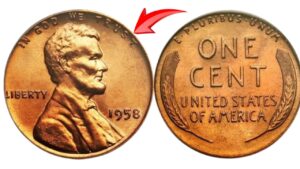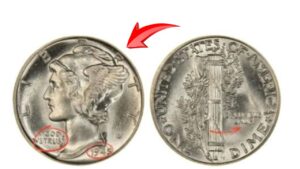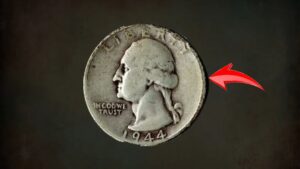If you’ve ever spotted a 1925 Lincoln Wheat Penny with a tiny “S” mint mark tucked below the date, you may want to give it a closer look. While it may appear like just another old penny, this particular coin—minted in San Francisco—has caught the attention of serious collectors due to its scarcity in high grades and the impressive prices it can command at auction.
Let’s dig into what makes the 1925-S Wheat Penny so special, how rare it really is, and how much it could be worth based on condition.
The Story Behind the 1925-S Lincoln Penny
In 1925, the San Francisco Mint produced just over 26 million Lincoln Wheat Pennies. While that number might seem high, it’s relatively low compared to other years in the early 20th century. For context, several years in the 1910s and 1920s saw mintages topping 100 to 200 million pennies.
This production slowdown made the 1925-S a semi-key date in the Lincoln cent series. It’s especially sought-after by collectors trying to complete a full run of early Lincoln pennies, which includes coins from all three mints: Philadelphia (no mark), Denver (D), and San Francisco (S).
What Makes It Valuable?
The 1925-S Wheat Penny is relatively common in circulated condition, meaning it’s seen years of pocket-to-pocket movement. These versions usually have noticeable wear and are worth a few bucks. However, uncirculated examples in Mint State (MS)—particularly those with a bright, original Red (RD) color—are much harder to come by.
A top-tier 1925-S penny graded MS65 Red sold for a staggering $54,625 at Heritage Auctions in 2005. That kind of value comes from a mix of rarity, eye appeal, and top preservation. Coins graded MS67 for this date are nearly unheard of and considered trophy pieces for elite collectors.
Key Features to Look For
If you think you may have a valuable 1925-S penny, here’s a checklist of what to look for:
- Date: Must clearly show 1925 on the obverse (front).
- Mint Mark: A small “S” just beneath the date indicates the San Francisco Mint.
- Reverse Design: Classic wheat ears on both sides of the phrase “ONE CENT,” used from 1909–1958.
- Color and Condition: Red coloration (not brown or toned) with minimal wear and strong strike details is what drives value.
If your coin checks these boxes—especially if it still has luster and sharp details—it’s worth considering professional grading.
Value Breakdown by Condition
Here’s a table to give you a ballpark idea of what your 1925-S Wheat Penny might be worth:
| Condition | Estimated Value |
|---|---|
| Good (G-4) | $1 – $3 |
| Fine (F-12) | $5 – $10 |
| Extremely Fine (EF-40) | $30 – $50 |
| MS63 Brown | $100 – $200 |
| MS65 Red | $8,000 – $55,000+ |
Note: Color plays a key role in value:
- Brown (BN): Older-looking, darker pennies.
- Red-Brown (RB): A mix of reddish hue and toning.
- Red (RD): Bright coppery red—most valuable.
Should You Get It Graded?
If your penny shows strong detail, original red color, and minimal wear, submitting it to a top-tier grading service like PCGS or NGC could be well worth the cost. These services will authenticate and certify your coin, giving collectors confidence—and often unlocking top-dollar offers at auction.
Why Condition Is Everything
The 1925-S Wheat Penny highlights one of the golden rules of coin collecting: Condition trumps quantity. Even with 26 million minted, very few survived in high-grade condition with their original luster intact. That scarcity in top condition is what fuels sky-high prices.
So, if you’ve got a stash of old pennies in a jar, it might be time to take a second look. A small “S” under the date could turn a common coin into an impressive collector’s item.
FAQs
Is a 1925-S Wheat Penny always valuable?
Not always. Circulated coins are usually worth $1–$50. Only mint-state, red-colored examples fetch thousands.
What does “MS65 Red” mean?
“MS” stands for Mint State (uncirculated), and “65” is a grade on a 1–70 scale. “Red” refers to the original red copper color that boosts value.
Should I clean my penny before grading?
No. Cleaning can damage the surface and reduce the coin’s value. Always send coins in their natural state.



